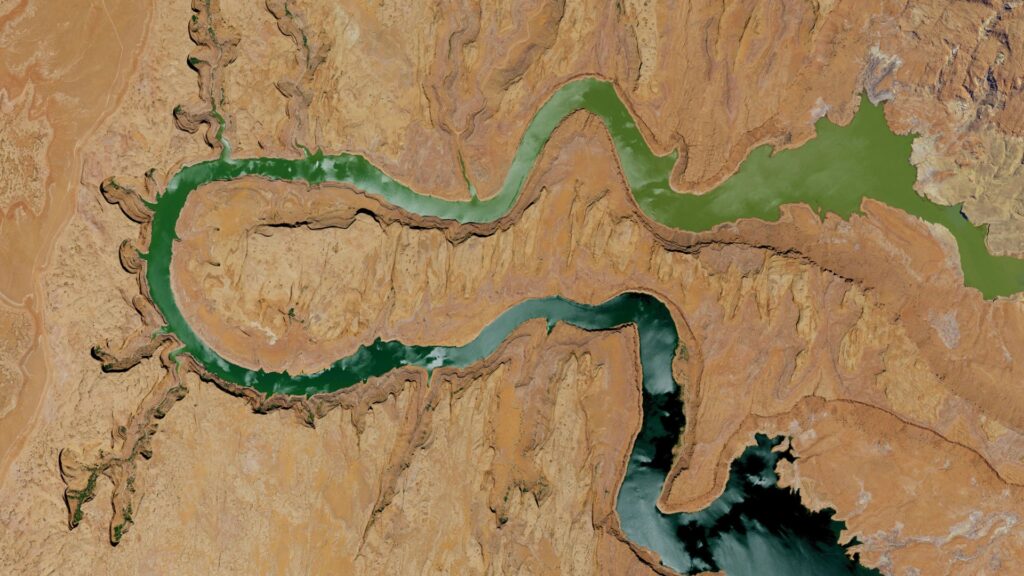
Water Weekly: “We’ve lost the aqueduct!”
If you can only read three stories about Western water this week, read these:
1. Wall Street is thirsty for its next big investment opportunity: The West’s vanishing water
Reporting from the town of Cibola, Arizona, on the Colorado River, CNN reporter Lucy Kafanov spoke with concerned citizens about a large water transfer agreement from a former farm near town to Queen Creek, Arizona, a growing Phoenix suburb about 200 miles away. The agreement, approved by all the required authorities, is now the subject of a lawsuit that highlights how vulnerable rural communities feel in the face of the “trillion-dollar market opportunity” an increasing number of Wall Street firms see in Western water. Mohave County (Arizona) supervisor Travis Lingenfelter calls it a battle for the future of Colorado River communities. He told Kafanov, “I don’t think that they should be allowed to profiteer off of Arizona’s finite resources.” The lawyer representing Greenstone Management Partners, a MassMutual subsidiary behind the Cibola-to-Queen City water rights sale, says his clients are just exercising their property rights. “That water right is valuable property, which can be transferred. It’s like buying and selling land, except that, Colorado River water can only be transferred if it goes through an extensive review process at both the State and Federal Levels,” he said in a statement to CNN.
2. ‘We’ve lost the aqueduct’: How severe flooding threatens a Los Angeles water lifeline
On March 10, floodwaters in the Eastern Sierra Nevada caused a section of the 100-year-old Los Angeles Aqueduct to crumble, spilling water bound for LA onto ranches near the town of Olancha, California. Los Angeles Department of Water and Power (DWP) staff were on hand quickly to drain and repair the busted canal, but a repeat of the situation looms as the Sierra’s massive snowpack heads into the spring snowmelt season. LA Times reporter Louis Sahagún chronicled the response by DWP personnel and what the aqueduct failure says about the aging infrastructure that provides a critical piece of LA’s water needs. As Sahagún writes, the story is “an indication of just how difficult it would be to defend the waterway against torrential runoff from a winter of near record snowpack.”
3. Heavy snowfall a boon to cloud seeding in Southwest Colorado – until it isn’t
The cloud-seeding cannons in the San Juan Mountains were turned off this year far earlier than in previous years. That’s because normally they are permitted to operate between November and April, and blast silver iodide into storm clouds whenever they can to try to get moisture to fall as snow. But this year, the snow-water equivalent in the San Juans was 140% of the 30-year median by February, so the cloud-seeding program shut down for the season, reports Reuben Schafir for the Durango Herald. As of today, the San Juan Basin has 185% of its median snow-water equivalent and the Upper Colorado-Dolores is at 203%. Even with the early pause, seeding efforts were “very effective” according to Eric Hjermstad, co-owner of Western Weather Consultants, which operates the San Juan Mountains Weather Modification project, one of seven permitted cloud-seeding projects in Colorado. “Seeding efforts have yielded between 8% and 13% more snow from each passing storm,” Hjermstad told Schafir. “Anytime you have the opportunity to bring more water and moisture to the ground, that’s good, we should do that,” said Steve Wolff, general manager of the Southwest Water Conservation District (SWCD). Funding for the cloud-seeding program comes from SWCD, smaller water districts, ski resorts, and lower basin states keen to ensure reliable upstream water production.
Get the Water Weekly in your Inbox each week.





